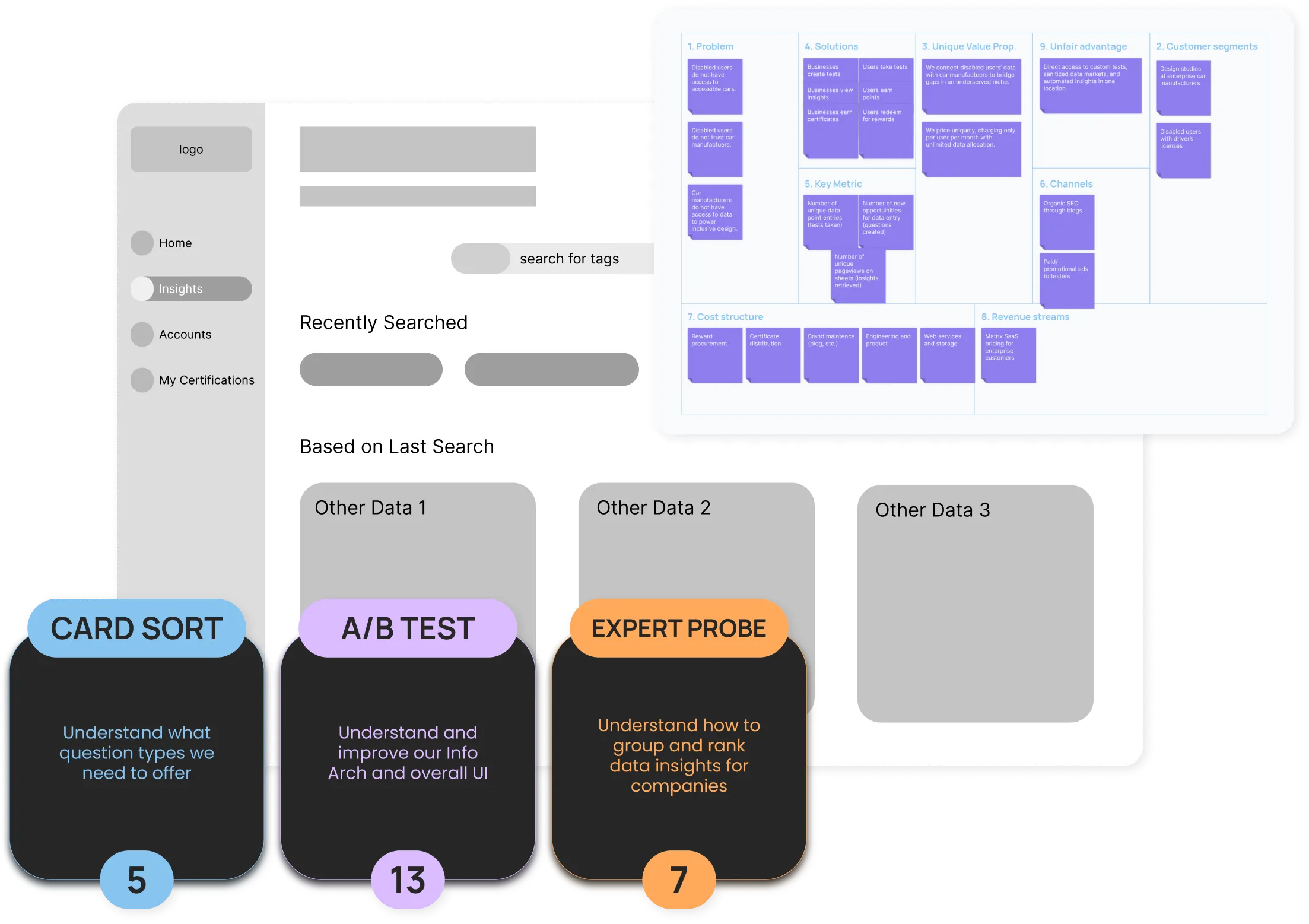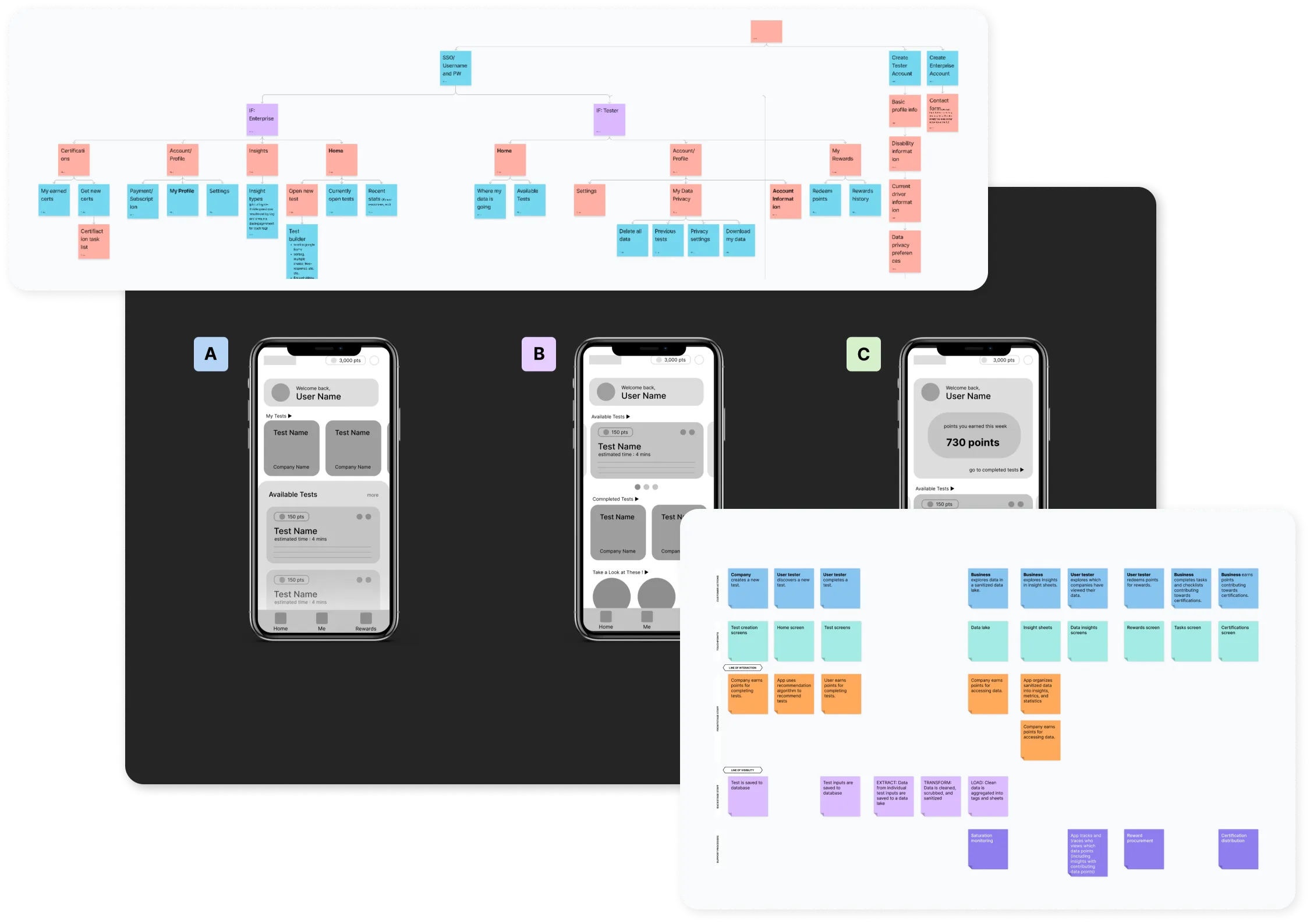
Teko
I leveraged product discovery and a gap analysis to find missing links between disabled users and car manufacturers.

Project highlights
Led extensive user and market research to define fixable gaps in a sensitive, regulated industry
Designed and conducted user testing activities, uncovering and applying insights iteratively
Designed a service model and product pricing model to create and support AAR

Discover the Product
Our process started, as always, with the user. We knew from sentiment in our community that disabled people who are unable to drive struggle to get from point A to point B. Upon looking deeper through user interviews, cultural studies, and research in forums, we found few solutions that disabled users could rely on or trust. We then turned to car manufacturers, we learned about their regulations and operations, and we interviewed experts in the industry to discover a lack of confidence in understanding disabled user's needs. This gave us a clear gap to fill and a hypothesis to test against.
Tools Used




Teko's development was grounded by the key hypothesis we defined and tested against. We rapidly brainstormed and prototyped ideas then ranked them by accessibility, breadth, and competitive edge. We tied each idea back to our original curiosities and hypothesis, shaping, combining, and morphing each idea through prototypes and user tests until we reached saturation and felt confident in our output.
Tools Used




Deliver the Results
Teko creates the infrastructure to connect disabled users with car manufacturers with low overhead for both parties. During our iterations, we learned just how willing and excited many disabled people are to document and share their experiences -- their voice has gone unheard for so long, their biggest need is just to be heard. To get this data to R&D departments at manufacturers, we created a marketing-driven incentive for teams to engage with feedback and earn certifications to represent their progress.
Tools Used



